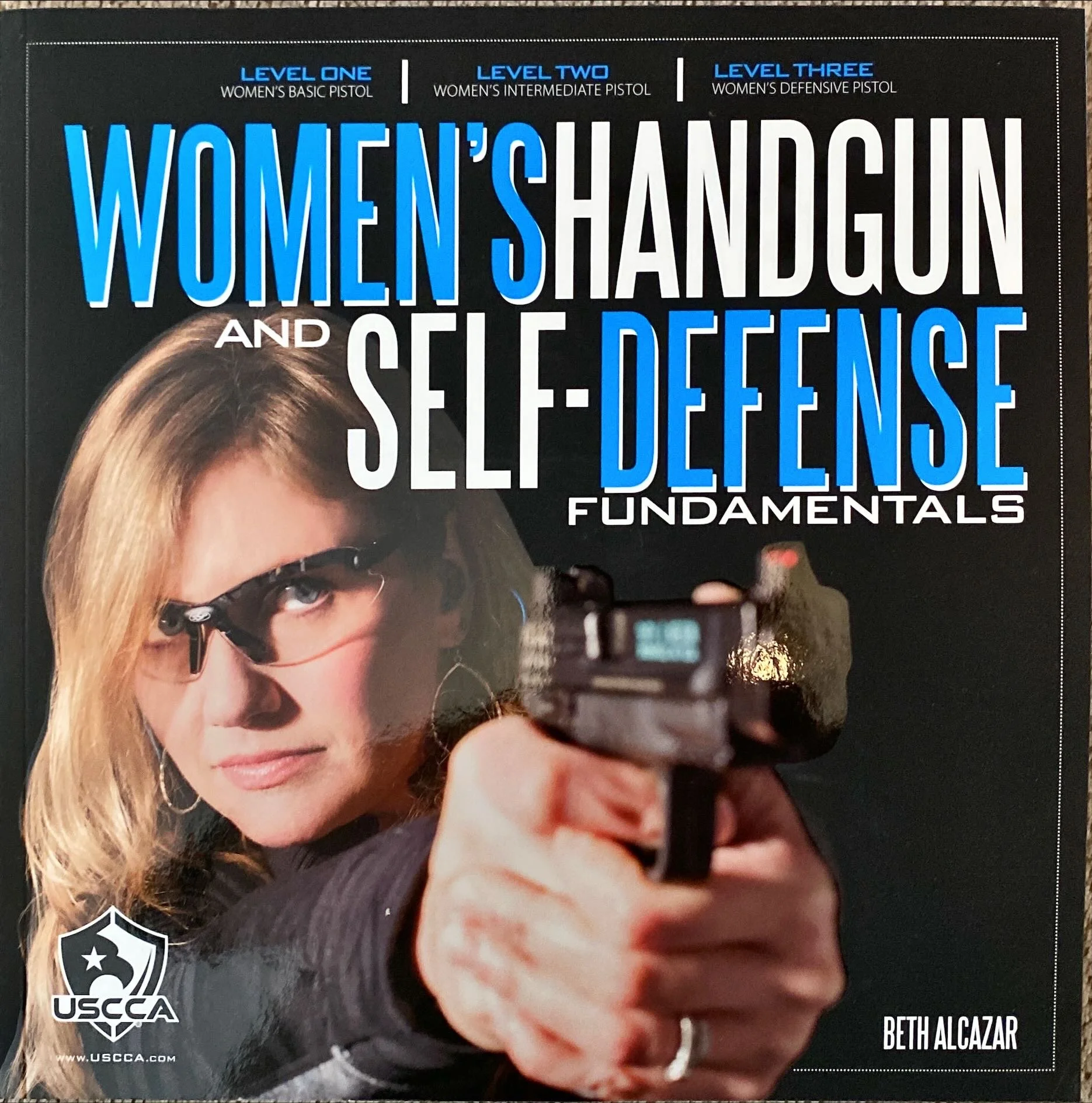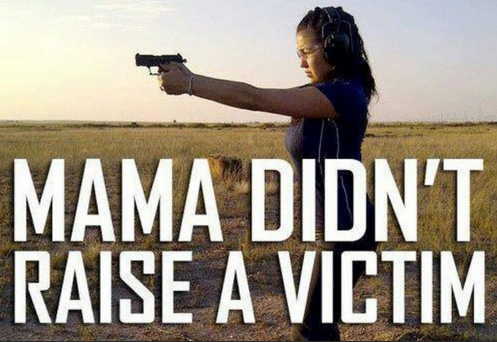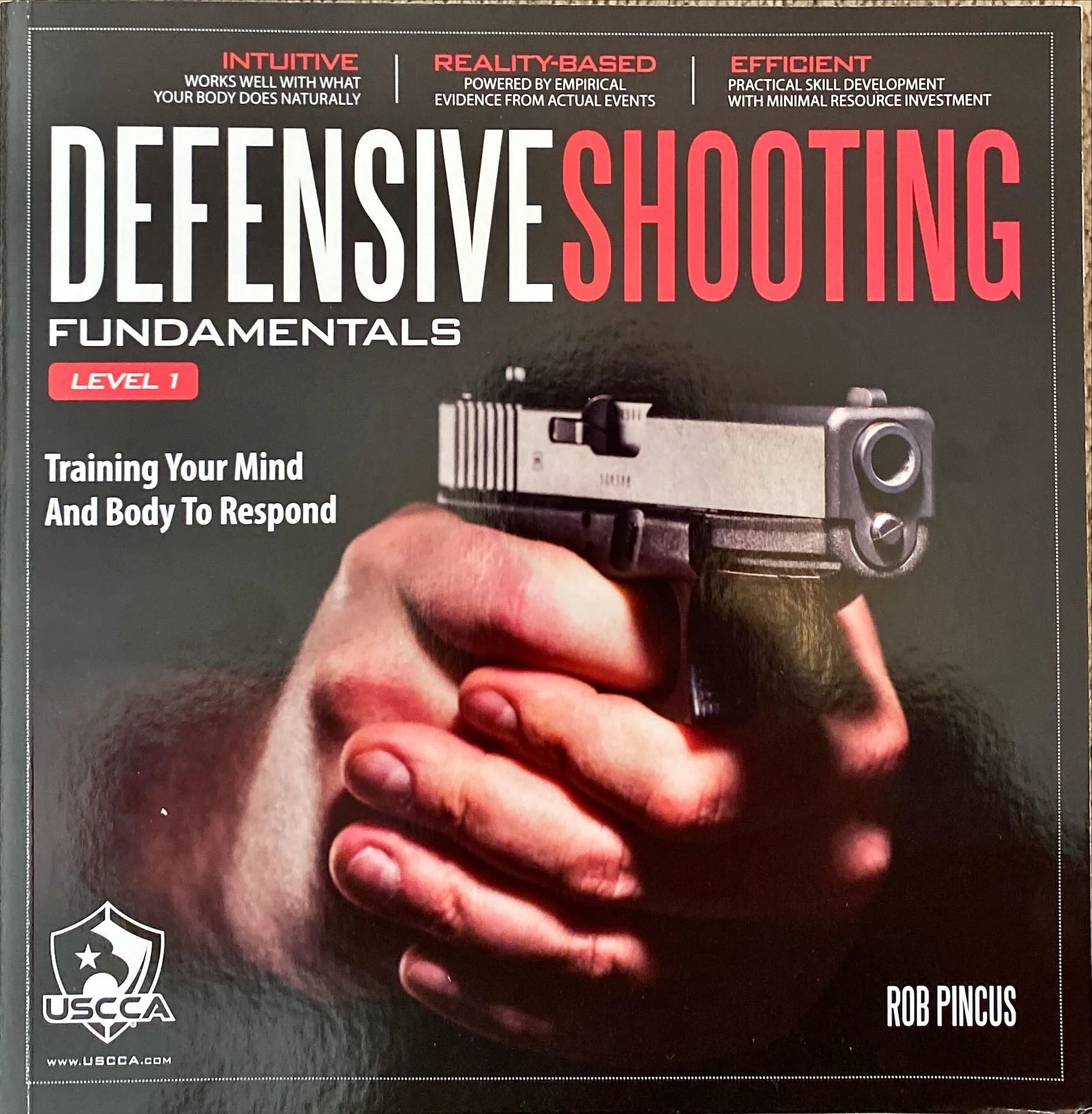ARE YOU READY TO TAKE THE NEXT STEP?
CHECK OUT THE COURSES WE OFFER
For a list of current classes click on the ‘CURRENT CLASSES’ link above.
Women’s Handgun and Self-Defense Fundamentals
Women’s Handgun and Self-Defense Fundamentals is a welcoming and engaging training course created specifically for women.
The truth is, there’s not a one-size-fits-all solution to self-defense training. Some students benefit greatly from a tailored approach that takes into consideration body type — and even mindset. That’s why the USCCA has developed a curriculum that offers women a specialized introduction to lifesaving education and training.
Like Sonia says “Yea, I shot like a girl. Want a lesson?”
Women's Basic Pistol
In this introduction module, we introduce students to the basics of handgun safety, including how to safely clear (unload) a semi-automatic pistol. We go on to explain and demonstrate the seven basic fundamentals for safe and accurate shooting. The lesson is rounded out by taking those basics, and putting them into practice both in the classroom and on the shooting range. This lesson will act as a building block as the student progresses to Women’s Intermediate Pistol.
Women's Intermediate Pistol
In this module, we expand on the building blocks outlined in Women’s Basic Pistol, with a detailed and visual explanation of the differences, the pros, and the cons of semi-automatics and revolvers; and even how these firearms can malfunction (and the procedures for correcting those malfunctions). We then introduce the student to holster options for concealed carry, and what every woman (and man) should know about establishing boundaries using the “color codes of awareness.” This lesson is summarized with a number of on and off the range exercises, allowing the student to put these intermediate skills to practice.
Women's Defensive Pistol
In the final module of the series, we introduce the student to a number of advanced topics, skills and drills. Topics include a detailed explanation of what students should know avoiding, escaping, and defending against an attacker, and even what the student should know about their obligations under the law when it comes to the legal right to use force. We then explain and demonstrate a number of methods of drawing a firearm including from a holster or from a handbag. Three different types of reload methods are demonstrated, and the student is introduced to what they should expect, and what they should know when visiting a live fire range for the first time, including a number of important range commands. This lesson is also concluded with a number of on and off the range drills, including learning how to use cover and concealment, and even how to shoot on the move.
Defensive Shooting Fundamentals - Level 1
Defensive Shooting Fundamentals will guide you through the steps you'll need to take to go from just sending rounds downrange to actually training in specific, tested methods of armed self-defense.
From stance to grip to physical shooting technique, Defensive Shooting Fundamentals Level 1 will help you hone the edge on your inner warrior expert. You'll get your body working with your gun instead of against it, you'll learn which intuitive skills work best with what your body will naturally do while under stress in a combat situation, and you'll learn to apply this information simply and effectively - regardless of your skill level.
Introduction to Defensive Pistol Fundamentals
In this introduction course you will learn proper Defensive Shooting Fundamentals. Your instructor will help you build your foundation to include, grip, stance, kinesthetic alignment, all the way up to firing 3 to 5 rounds efficiently and effectively to neutralize the threat. Drills Include: Safety, Comfort, Competency Concepts, Medical, Extend-Touch-Press, Up through Up Multiples, Balance of Speed and Precision.
Home Defense - Defensive Shooting Fundamentals
In this lesson you will revisit the fundamentals taught to you in the Introduction to Defensive Shooting Fundamentals course. Once you've demonstrated proficiency your instructor will take you through additional drills that will make you a more efficient protector of your home and your family. Drills Include: Safety, Comfort, Competency Concepts, Medical, Extend-Touch-Press, Up through Up Multiples, Balance of Speed and Precision, Emergency Reload, Dynamic Deviation Control, Home Defense Simulation.
Concealed Carry - Defensive Shooting Fundamentals
This class will prepare you for carrying a firearm in in the real world. Your instructor will guide you through your bodies natural reactions, and prepare you to use those reactions to your advantage. Drills Include: Safety, Comfort, Competency Concepts, Medical, Extend-Touch-Press, Up through Up Multiples, Balance of Speed and Precision, Emergency Reload, Presentation from the Holster, Lateral Movement, Facing Drill, Stroll Drill.
Concealed Carry and Home Defense Fundamentals
Concealed Carry and Home Defense Fundamentals is a comprehensive course for anyone considering owning or carrying a firearm for self-defense. The course is a complete guide to understanding conflict avoidance and situational awareness; home security and home defense; handgun, shotgun and AR-15 basics; shooting fundamentals; the physiology of violent encounters; the legal aspects of using deadly force (including knowing what to do in the aftermath); and a complete guide on gear, gadgets, and ongoing training.
Basic Pistol
In this introduction module, we introduce students to the basics of handgun safety, including how to safely clear (unload) a semi-automatic pistol. We go on to explain and demonstrate the seven basic fundamentals for safe and accurate shooting. The lesson is rounded out by taking those basics, and putting them into practice both in the classroom and on the shooting range. This lesson will act as a building block as the student progresses to Intermediate Pistol.
Intermediate Pistol
In this module, we expand on the building blocks outlined in Basic Pistol, with a detailed and visual explanation of the differences, the pros, and the cons of semi-automatics and revolvers; and even how these firearms can malfunction (and the procedures for correcting those malfunctions). We then introduce the student to holster options for concealed carry, and what every woman and man should know about establishing boundaries using the “color codes of awareness.” This lesson is summarized with a number of on and off the range exercises, allowing the student to put these intermediate skills to practice.
Defensive Pistol
In the final module of the series, we introduce the student to a number of advanced topics, skills and drills. Topics include a detailed explanation of what students should know avoiding, escaping, and defending against an attacker, and even what the student should know about their obligations under the law when it comes to the legal right to use force. We then explain and demonstrate a number of methods of drawing a firearm including from a holster or from a handbag. Three different types of reload methods are demonstrated, and the student is introduced to what they should expect, and what they should know when visiting a live fire range for the first time, including a number of important range commands. This lesson is also concluded with a number of on and off the range drills, including learning how to use cover and concealment, and even how to shoot on the move.
Concealed Carry Courses for California
California has the sheriff departments and city police run the program in their jurisdiction. Because of this each has we have two different classes to meet the requirements of the jurisdiction you live in. However, some departments have specific Instructors that they recognize and work with (preferred venders list).
CA CCW 8 hour course
CA CCW 16 hour course
CA CCW 4 hour renewal course
DEVELOPING A PERSONAL- AND HOME-PROTECTION PLAN
This class prepares students for not only how they might react if they’re confronted by a violent crime but also how they might avoid it in the first place. It will uncover
a process that encompasses awareness, avoidance and preparation, leaving them less likely to have to employ force in self-defense in the first place.
Benefits:
Students will learn how to build a personal- and home- protection plan and be ready to face a multitude of threats.
Home Defense Fundamentals
Developing a personal & home protection plan is a key component of not only preparing for how we should (or might) react if confronted by a violent crime, but also how we might avoid violent crime in the first place. Within this lesson, Michael Martin explains that developing a protection plan is about much more than becoming proficient with a firearm or writing up a home invasion plan. It’s a plan that must encompass awareness, avoidance, and preparation, so that we’re less likely to find ourselves in a situation where we have no other option than to use our firearm, rather than more likely.
VIOLENT ENCOUNTERS AND THE AFTERMATH
Physical, psychological and emotional reactions occur when humans undergo extreme stress, such as during an incident involving deadly force. This mini-class explores what students should do immediately after using force in self-defense. When law enforcement arrives at the scene, it is crucial that any defenders appropriately conduct themselves and prepare for dealing with the aftermath.
Benefits:
Students will learn how to appropriately respond during and after a self-defense incident.
THE LEGAL USE OF FORCE
This class will cover important legal topics concerning self-defense, including the laws governing the legal use of force inside and outside of the home. Students will get the opportunity to test what they’ve learned by facing several real-world scenarios.
Benefits:
Students will come away with an understanding of laws related to armed self-defense.
GEAR AND GADGETS
The variety of self-defense gear and gadgets available today can be overwhelming. Gun vaults, holsters, lights and lasers — where should those new to firearms start? This mini-class will explore the different kinds of self-defense gear and gadgets and why each is important.
Benefits:
Students will uncover tips and tricks for finding the right gear and gadgets — unique to their own needs — before making a purchase.





